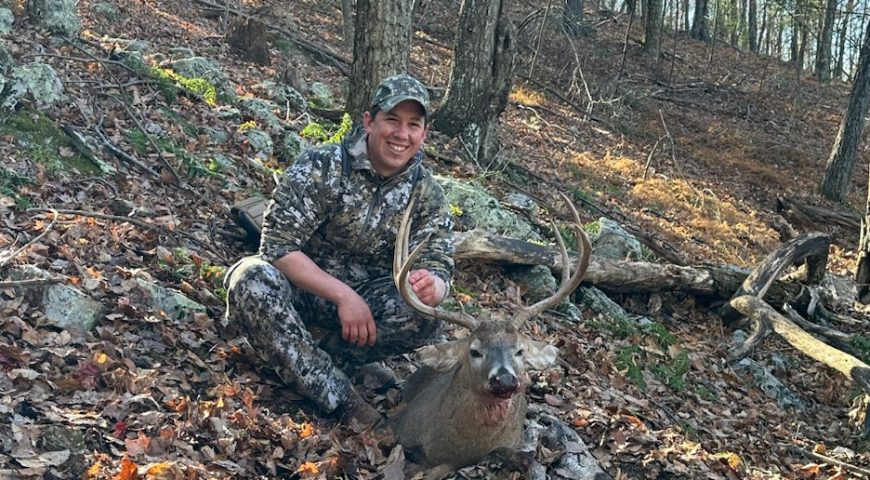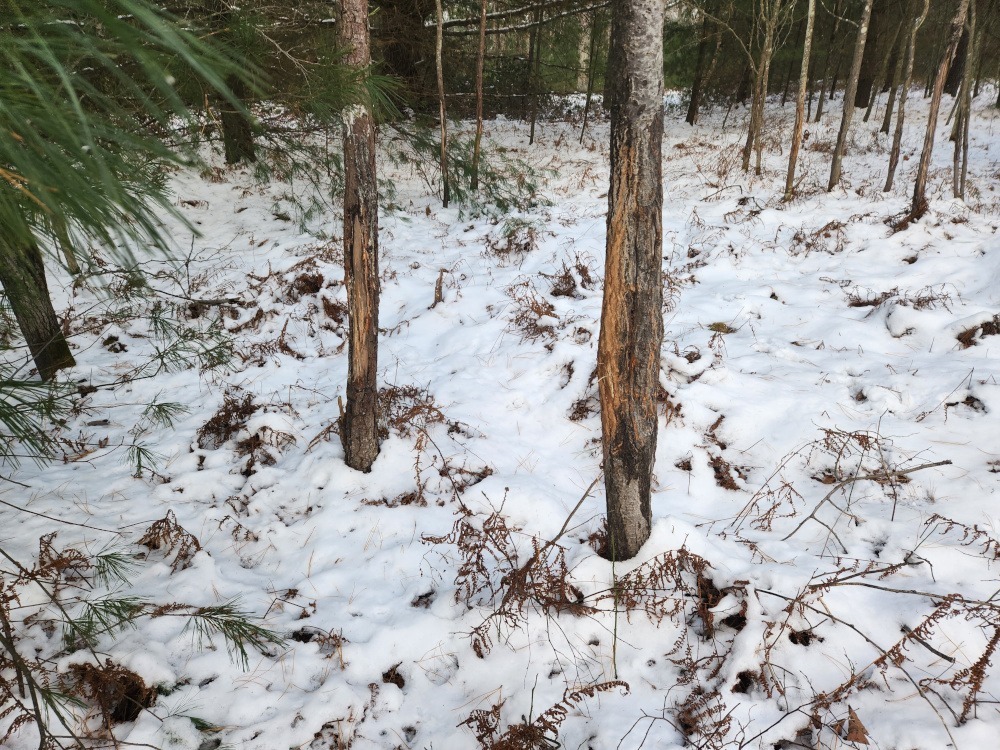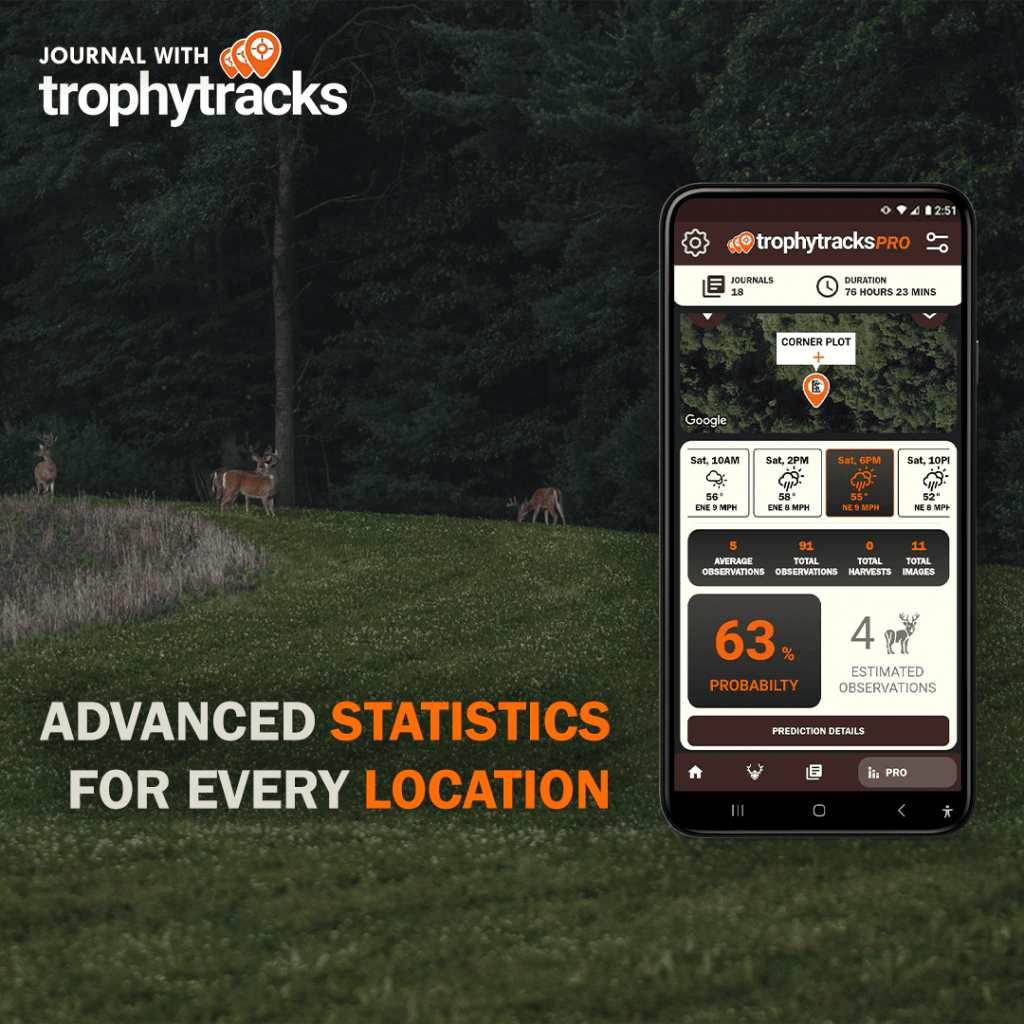
What is the Best Time to Hunt Whitetail Deer?
Best Time to Hunt Whitetail Deer During the Day
“You need to sit all day.” “I only hunt in the evenings.” “The mornings are the best time to catch big bucks on their feet.” As hunters, we hear these all the time. It makes you wonder, what is the best time to hunt whitetail deer? Is there a best time to hunt whitetail deer? Besides stating the obvious, “You need to be at the right place at the right time,” there are a few ways that we can predict deer movement to significantly improve our chances for success.
Studies show that the best time to hunt whitetail deer is impacted by a few variables: time of year, weather, and hunting pressure. Generally, the best time to hunt is in the mornings and evenings. During the peak of the rut, mature bucks will cover ground hunting for does in the middle of the day.
In this article, we aim to help you, the hunter, know the times that you need to be in the woods. Also, we will provide some tools that can help you predict when and where you need to be. Success is 100% linked to being at the right place at the right time, but when we don’t know the right time or place we think it’s just luck. Yes, some people seem to regularly, almost by accident, find success, but if you want dependable success, it’s time to think and prepare.
What Time of Day Are Bucks Most Active?
To state the obvious, they move when you aren’t in your stand. A laughable, but true statement many hunters agree with. You have probably heard someone say, “Deer are nocturnal because of hunting pressure.” Studies show that deer are always, regardless of the time of the year and hunting pressure, going to move the most at two times of the day: dawn and dusk. The twilight hours are when deer move the most and are the best deer hunting times.
I can speak from experience that even during hunting season this is the best time to hunt whitetail deer for two reasons. First, deer want to move at that time, and second other hunters are coming and going to their stands during that time. I have no qualms in sharing that one of my greatest reasons for success during rifle season is other hunters bumping deer into me by accident because I was in stand before they walked into the woods.
The reality is that deer are not exclusively nocturnal. They are adapting their movement to avoid places where they feel pressure. Deer, particularly mature bucks, will get to the place they want to go after they are sure the danger is gone.
Best Time to Hunt Whitetail Deer | Buck Movement During The Rut
The rut does change some things. Detailed studies and hunters acknowledge that bucks are far more active into daylight hours during the rut. Bucks will move twice as far in the middle of the day compared to the weeks prior to the rut. However, that is still only a third of the distance they are willing to cover at twilight. More on this in a bit.

What Time of Day Are Most Big Bucks Killed?
I wish there was a straightforward answer to this question, but there isn’t. Hold on though. Let’s break that down. The reason this answer isn’t a straight “7:35 am every morning” can be broken down with one word: variables.
We have established that regardless of the time of year, deer predictably move most during twilight hours. Most bucks are harvested during this time. However, during the rut, many bucks are harvested in the late morning and afternoon. My most successful time is 9 a.m. around November 11 during the peak of the rut. For this reason, in November, if I plan a morning hunt, I will be in the stand until 10. You don’t want to miss the best time to hunt whitetail deer in your location, do you?
Another variable is the style of hunting. I know several hunters who have been very successful watching a mature buck bed down with a doe and then put together a stalk to get within bow range. These harvests usually happen in the late morning to early afternoon.
The third variable is weather. Most people who have been hunting deer for a few years will know to hunt cold fronts, but weather in general will greatly impact deer movement. On a very windy day, deer don’t want to move as much. Why? Because deer know they are vulnerable to being stalked. On a day with cloud cover, twilight can be 30 minutes longer and deer will put that time to use.
Best Time to Hunt Whitetail Deer | One Killer Move
Most people use trail cameras to get photos of deer, but trail cameras are much more valuable than that. The time, date, and temperature stamp give you great data to start planning your hunt. Couple this with some easy-to-find wind and weather information, and you are starting to get a good picture of your conditions. All of this data can be at your fingertips with hunting apps like TrophyTracks.
If you are getting photos of bucks once a month, coming from the same direction at dark, you already have a lot of information. Check back over historical wind conditions and see if there is any trend, there probably is. This data combined with the TrophyTracks hunting journal and you quickly unlock your ability to predict movement.
You generally know the direction the buck is coming from. You also usually know the conditions he travels to your location in. Set up in the direction he is coming from when the conditions are in his favor. This may seem oversimplified, but acting on data is better than guessing. It is about knowing the best time to hunt whitetail deer vs. guessing.
Do Bucks Move During the Day?
Yes, but only one-quarter to one-third the amount they do during the higher movement hours at twilight. The rut does impact daytime deer movement, typically doubling the amount of daytime movement from just a few weeks prior. How much movement is that? Glad you asked.
Deer normally only move about 40-60 yards in the middle of the day. If you’ve spent a considerable amount of time watching deer you have probably seen this. Deer moving long distances in the middle of the day are almost always linked to predation or being bumped out of their beds by a hunter.
Even in the rut, many times I may see a buck and a doe bed down in the morning, get up a few times in the middle of the day to look around, stretch, move to a more comfortable bed, and then bed down again. The increase in movement tracked during the rut only amounts to about 80-120 total yards. You may see some young bucks on the field edges and on the move, but most likely it’s because he got a bit too nosey with a doe being courted by a bigger buck.
How Do You Get Bucks to Come Out During the Day?
The most effective way to get a buck to feel comfortable to come out during the day is to strategize each hunt carefully. I like to recap my hunts regardless of the outcome. Here are several questions (and answers) I want to track after a hunt.
- What way was the wind blowing?
- Which direction were deer moving related to the wind?
- What was the forecasted weather for the week?
- What time were my observations?
The list goes on. If you are hunting well, it gives you something more than a filled freezer. It gives you something far more powerful…Data. And what do you do with the data? You track it so you don’t forget. That’s why our app is so powerful as a prediction tool. Not only can you drop pins where you are seeing activity, it automatically logs the weather, date, time, temperature, and notes you have. As a reminder, it’s free. Okay, back to the strategy of figuring out the best time to hunt whitetail deer.
With the data you logged, you can predict pretty closely when deer should be active in an area. It will also tell you if your presence is impacting your deer sightings. If you saw 10 deer the first time you hunted a location, and then after hunting the stand several times you only see a button buck and a spike and all the conditions are the same, you are probably the reason you aren’t seeing deer.
It goes back to the joke at the beginning of this post. Deer are moving while you aren’t there. The best time to hunt whitetail deer isn’t always when you are not there, however.
As an example, I have a friend who runs a high-quality outfitting service in Alaska, in the spring they offer baited bear hunts. Something that he notices is that bears will end up on the bait 30 minutes after the client leaves the blind. He knows this isn’t bad luck, it’s the hunter making a mistake. It could be they are making noise, spreading scent, not paying attention while accessing the blind, or a host of other issues. Remember, however, that hunter mistakes are fixable.
Deer are mostly moving during dusk and dawn hours. However, they will modify where and how they move to stay away from perceived threats. So, scouting from a distance, patience to wait for the best conditions, and planning your access will always be a step in the right direction.
Attracting Deer Out Earlier in the Day
There are a few active things you can do to pull bucks off their beds earlier in my experience. Check your local laws before implementing all of them, however.
Attractant Scents and Buck Lures
One of the biggest bucks I have ever seen on public property came in a few hours before twilight to a buck scent imitation I had hung a few hours before. Unfamiliar deer scent is a way to pique the curiosity of a jealous buck and get him to move. The trick is to place it without him getting a nose full of your scent on the way in, which is why he isn’t the biggest buck I have harvested on public land.
Deer Calls
Calling can without a doubt work. Whether you choose to use a grunt tube, a doe in a can, or rattling antlers, they are all great tools to get a deer to move when they are not normally going to. I have rattled in countless bucks. I have also grunted in deer I didn’t know were there, and seen deer respond to calls more than I can explain in this article. I’ve also had the privilege of hearing real calling while hunting. Deer react to calls, plain and simple.
Two words of advice on this. Frequency can help you or can kill your opportunity. When you have a deer in sight, resist the urge to keep calling until it runs to you or it might run away. Call until you get acknowledged and then let it go. A brief reminder would work, but too much can spook a mature buck.
Also, pay attention to wind direction. If the wind is blowing your scent right to a deer, calling may only educate them. They may start your way at first, but a nose full of your scent will turn them in a heartbeat.
What Temperature Do Deer Move the Most?
You guessed it, generally colder is better, but don’t be fooled, deer will move when it is warm too. I generally see the most deer movement when temperatures change from warm to cold. Big bucks show up just as a cold front is forecasted and temperatures are supposed to drop. It is one of the best times to hunt whitetail deer.
We like to think that cold fronts are the ticket to a notched tag, and they are, but it’s mostly the transition from warm to cold. It’s kind of like us getting ready for winter in the late fall. We move more before the extreme cold starts. So do deer, except they move on the front end of a cold front. Watch for this opportunity. Instead of getting out in the coldest of the weather, try to beat it, and you will find lots of deer doing the same.
Why Do I Never See Bucks?
Thankfully the answer to this question is actionable. Hunting at the wrong time, with the wrong conditions, and poor awareness will always limit the amount of deer you see. This holds true also no matter how often you hunt. The only thing you need to do is start the process of elimination.
The most common issue I see with hunters who don’t see deer isn’t how hard they hunt, it’s always related to woods awareness and planning a hunt. I’ve seen too many average successful hunters who use outdated gear to think that you need to have new, advanced hunting gear to harvest a buck. It doesn’t depend on what you shoot, or what you wear, but what goes on with your mind and the data you find and log.
Start with paying attention to wind direction. Go to different stands. Scout new hunting properties and hang trail cameras in high-probability locations to take inventory of bucks. Don’t take it personally, think about the long run. A few years from now you will be leaps and bounds ahead because of the information you were able to understand. All the data will lead to seeing more bucks and figuring out the best time to hunt whitetail deer.
Guest Post by Evan Grimm
Evan Grimm is an outdoor content writer who dives deep into topics to produce informative and practical content. He is a TrophyTracks user and contributor, the owner of ETHIC Digital Products, and is heavily involved in non-profit ministry where he and his family now reside in Alaska.


